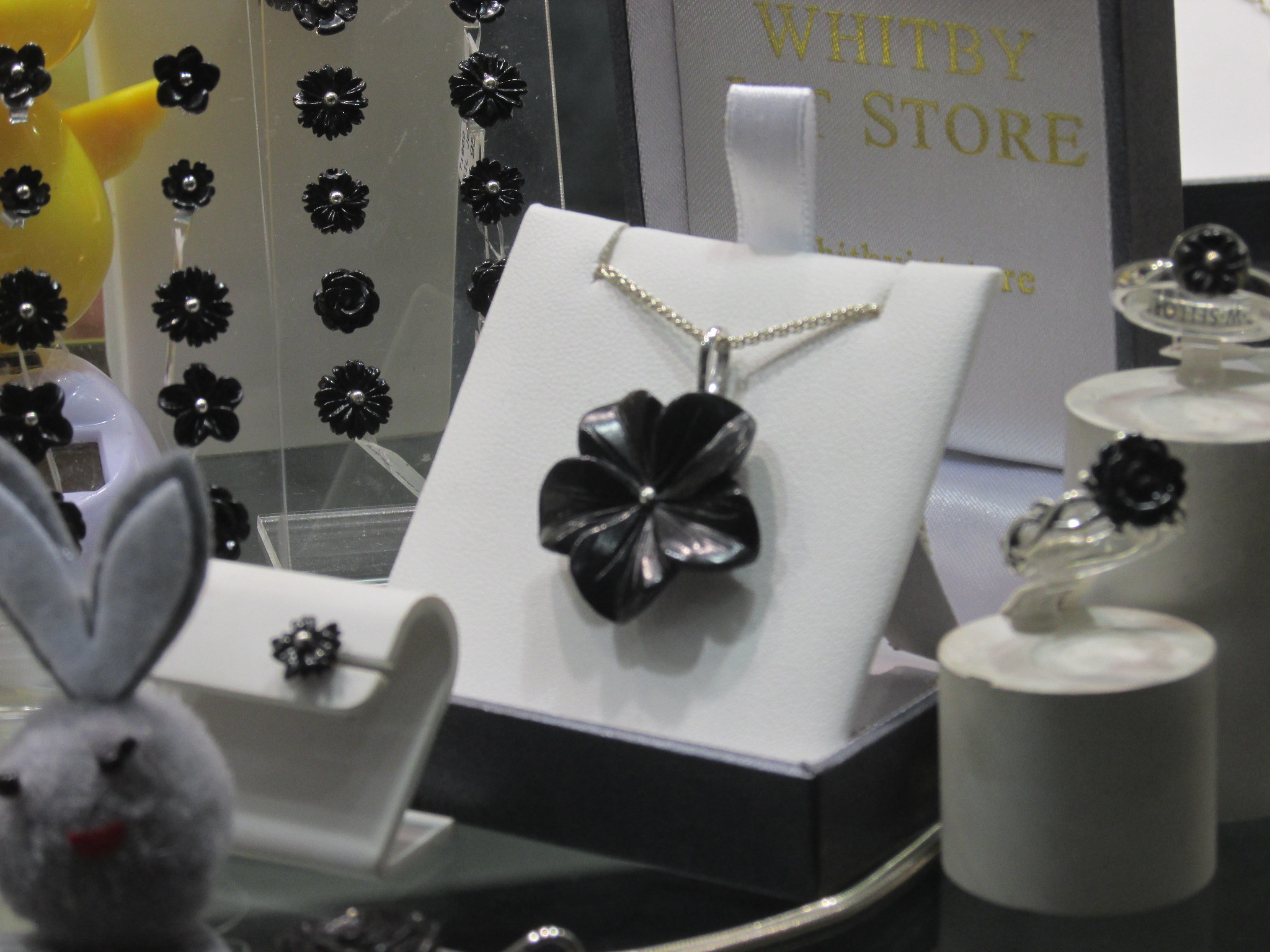 |
| Whitby ghost sign for wholesale jet merchant |
If you've never heard of jet you've almost certainly never been to Whitby, because every shop that isn't selling fish and chips is offering examples of the black, semi-precious rock. Its best known source in Britain is Whitby but there were mines all over North Yorkshire where it was extracted. The stone is fossilised wood from a type of monkey puzzle tree and is technically a specialised hard form of lignite.
 |
| Jet jewellery items in a Whitby shop window |
Jet has been used in jewellery for so long because of its lustrous hue, but also because of the belief that it had magical powers. The ancient Greeks and Romans believed that it could protect against snakes; an idea borne out by a necklace found in York during excavations of a Roman site that takes the form of a coiled snake.
 |
| This one's mine and I wear it often |
It is also possible to find items in a substance called “French Jet” but they are not true jet and easy to tell from the real thing. French jet is actually a form of black glass and is much denser than true jet and feels cold to the touch. More difficult to identify are the various other forms of coal that have been used as jet substitutes. Cannel coal and bog oak are very similar to jet but neither has the deep black colour or the sheen that jet has.
Although the History Anorak has a taste for jet jewellery, has some knowledge of the material and owns a few pieces (see the photo) most of the history on this page has been confirmed by reference to a Shire Publication called Jet Jewellery and Ornaments by Helen Muller. J M Cronyn’s Elements of Archaeological Conservation has also been consulted.

Thank you. I had never heard of jet. I wonder how it is carved into jewellery. The pendant you own is very pretty and could be worn with many different outfits.
ReplyDeleteI love old signs on old buildings. We have some downtown and it's always a treat to see.
Fascinating! I love Whitby jet and have the Shire Book you mention and a silver and jet ring bought at a little old shop in Whitby in the 1980s:)
ReplyDeleteI don't own any jet jewellery (one day I will, when I got to Whitby again!) but we used to hunt for it on the beach and found quite a few pieces as child. I have a piece I picked up down the coast at Filey which I'm sure is jet though I may be wrong.
ReplyDelete